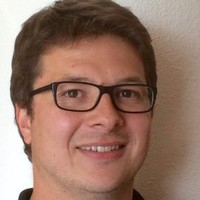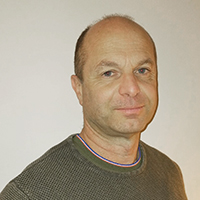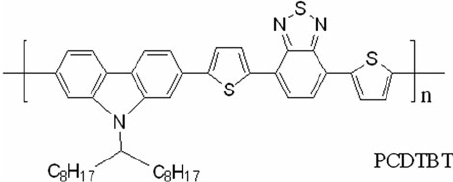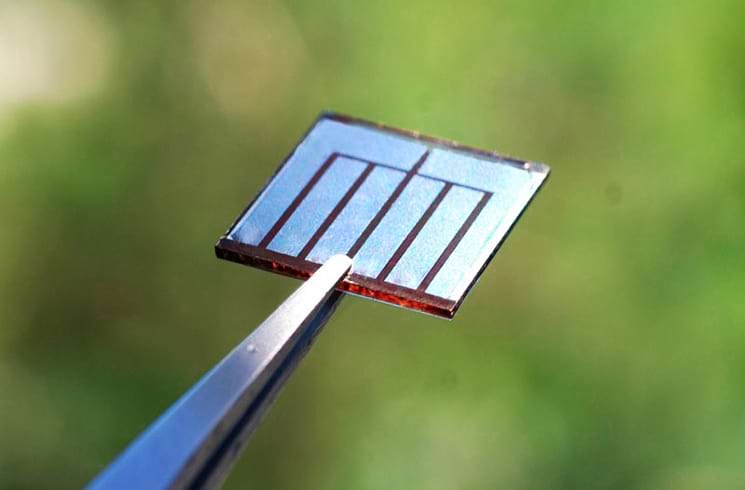
Seqens and Bordeaux INP launch a new Labcom : SPRINT
In January 2020, Seqens and the Bordeaux Institute of Technology (Bordeaux INP) launch a new Labcom under the name of SPRINT for Robust Printable Photoactive Semiconductors Laboratory for New Technologies.
DISCOVER MORE ABOUT THE NEW LABCOM
Hello Guillaume, Pierre-Antoine, could you please introduce yourself?
Guillaume Wantz (GW): I am Guillaume Wantz, Associate Professor since 2006 at the ENSCBP, the graduate school of physics and chemistry at the Bordeaux Institute of Technology (Bordeaux INP). Trained as an Engineer in Physics and Chemistry, I focused on the applications of chemistry in the field of electronics, since my PhD obtained in 2004 at the University of Bordeaux.
Today I perform my research at the IMS, Laboratory of the Integration of Material to the System, at the University of Bordeaux. Our research groups focuses on Organic Electronics devices, i.e. the use of organic semiconductors to manufacture various devices such as, for instance, organic light-emitting diodes (OLEDs), organic photovoltaic solar cells (OPV) and organic photodetectors (OPD).
Guillaume Wantz


Pierre-Antoine Bonnardel
Pierre-Antoine Bonnardel (PAB): I am Pierre-Antoine Bonnardel, also a chemist.
I obtained my Ph.D. in Chemistry (specialization in coordination and organometallic chemistry) in 1995 at the University of Manchester. I have been in charge for 20 years of fine chemistry and electronics projects at Seqens (formerly PCAS) as R&D Project Manager.
You are both at the initiative of an ANR Labcom, called SPRINT (for Laboratoire des Semi-conducteurs Photoactifs Robustes Imprimables pour les nouvelles Technologies). Could you explain how it came about?
PAB: The story started on the other side of the Atlantic ! About 10 years ago, our production unit and R&D department in Saint-Jean-sur Richelieu, Quebec, industrialized the production of a semiconductor polymer for OPV organic solar cells, PCDTBT, originally developed by Prof. Mario Leclerc at Laval University.

In 2016, we spotted a publication from the IMS (Scientific report, vol 6 p 39 -201, 2016) investigating the potential of PCDTBT in photodetector (OPD) applications, and decided to contact its authors to see if there were any possible avenues for collaboration.
GW: I was on sabbatical leave at Queen’s University in Ontario at the time, which allowed me to visit the Seqens industrial site “as a neighbour” and to lay the foundations for a partnership approach. In 2019, we started our first joint work, on the theme of the purity of organic components, within the framework of a collaboration contract and a post-doctorate funded by SEQENS.
This allowed us to test the effectiveness of the collaboration, and to build an ambitious Labcom proposal. This project was selected for funding by the ANR (French National Research Agency) in 2019 to set up a Joint Laboratory, with an initial duration of 4.5 years, starting January 1st, 2020.
The objective of this specific ANR call for projects is clearly to strengthen, and ideally to perpetuate, academic / industrial links in order to valorize the French research.
Let’s talk about the scientific project itself: what is at stake?
PAB: The products we’re developing are organic semiconductors.
These are alternatives to inorganic silicon-based semiconductors, which are already very widespread, particularly in the modern electronics as well as in common solar panels that are installed on the roofs of buildings, for example. These semiconductors requires very high purity: impurities must typically be reduced to the ppt scale for the systems to be efficient (1 ppt = 10-12, the equivalent of one milligram per 1000 tons!).
Organic polymers for OPV and OPD are under impressive progress these days, however industrial suppliers are still few, most of being them outside Europe and especially outside France. Moreover, a lack of reliability is often reported: there is undeniable batch-to-batch variation in the quality of commercial products.
GW: We suspect that with good impurity control, we will gain in reliability and device performance. Our objective is therefore to understand the chemical and electronic behavior of impurities within the polymer matrices, in order to identify critical pollutants and their tolerance thresholds.
We will also study the intrinsic properties of these polymers, their molar mass, their functionalization, in order to optimize their electronic properties.
PAB: Ultimately, the aim is to develop manufacturing processes that enable the economical and environmentally friendly production of organic semiconductors of consistent quality and increased performance in electronic applications.
You were telling us earlier, Guillaume, that these organic polymers are an alternative to silicon-based materials: what’s new about them?
GW: Polymers have a number of very interesting functionalities that differentiate them from silicon.
OPV solar cells can be semi-transparent, and are therefore used in the design of energy roofs that allow light to pass through. Polymers are also flexible materials that can be formulated as roll-up materials. In the future, for example, they could be used to manufacture solar boat sails !

PAB: The carbon footprint of polymers is also much smaller than that of silicon-based products.
The manufacturing process for the latter includes an energy-intensive purification step at very high temperatures. It is estimated that the energy balance of a silicon-based solar panel only becomes positive (when it delivers more energy than invested in its manufacture) after 2 to 4 years of use. This period is reduced to a few months with polymers.
Polymers do not contain any toxic substances either. In all respects, these products are part of a sustainable development approach.
GW: For photodetectors, silicon also has detection limits, particularly in the infrared, which polymers can overcome. Polymers would thus make it possible to develop contactless sensors, which opens up a vast potential for applications in very different fields: medical (“remote” surgical operations), biometric recognition, everyday uses (non-contact adjustable hotplates, for example), etc.
Polymers are already being used for fingerprint recognition, on smartphone screens, or at border controls. Via infrared detection, this technology could evolve towards venous fingerprint recognition, this time completely forgery-proof compared to fingerprint recognition. Facial recognition is also more effective in infrared.

We’re talking about high-tech and futuristic applications. How are you going to make the link between the polymers developed and their applications?
GW : We ensure a very close link with the needs of the market, and are partners with two of the world leaders in OPV and OPD, which we are fortunate to have in France: ARMOR and ISORG.
The Nantes-based company ARMOR, the market leader in organic solar cells, has permanently seconded two scientists to my team in Bordeaux, which enables us to address market issues directly.
ISORG, based in Grenoble, also has a team in Bordeaux, and develops high-performance photo detection solutions for smartphones and biometric recognition tools.
PAB: Together with ARMOR and ISORG, we will select the target polymers for the project, focusing on organic semiconductors for photovoltaic panels and infrared photodetectors.
These two leading market users have joined the Advisory Board of Labcom SPRINT, together with other academic experts: Olivier Dautel (CNRS Montpellier) and Nicolas Leclerc (CNRS Strasbourg). [GW1] They are thus directly involved in the developments, which will guide us to develop industrially competitive processes. The current commercial products suffer from a relatively high price. Therefore, particular attention will be paid to process optimization during the scale-up steps, in order to reach reasonable production cost.
What will be the contribution of your respective laboratories in this project?
PAB: The chemical synthesis of the polymers will be developed by the Seqens Lab team in Porcheville, our R&D center. We will carry out screening tests at laboratory scale, using artificial doping to study the influence of various impurities.
The selected polymers will then be produced at pilot scale for device studies at IMS.
GW: IMS will then characterize the electronic, electro-chemical and morphological properties of the products synthesized by Seqens. To this end, we will deploy a range of analyses including the measurement of oxidation and reduction potential, spectroscopic analyses and advanced physics techniques for the identification of charge transport at low temperature….
We will also produce “chips” from the received polymers: these are 15 mm by 15 mm samples, composed of an active polymer core, as well as interfacial layers for charge selection. We test these chips directly for their performance and stability in solar cells, and have specific know-how for testing OPD applications.

Multi-disciplinary expertises will be gathered for the project. Routinely, four researchers from Bordeaux (Sylvain Chambon, Lionel Hirsch, Laurence Vignau and myself), with complementary profiles (physicist, physico-chemist, electrochemist), will work within the framework of SPRINT.
What’s your ambition on this project?
GW: This project brings together within the same ecosystem all the players, academics and industry, to set up a French and high-performance OPV and OPD supply chain that is reliable and economical.
We have all the assets to take a leading market position in these demanding technologies by securing the entire chain, from polymer production to finished products.
Thank you both very much for your explanations. We will come back to you soon to get an update on SPRINT’s advances.

